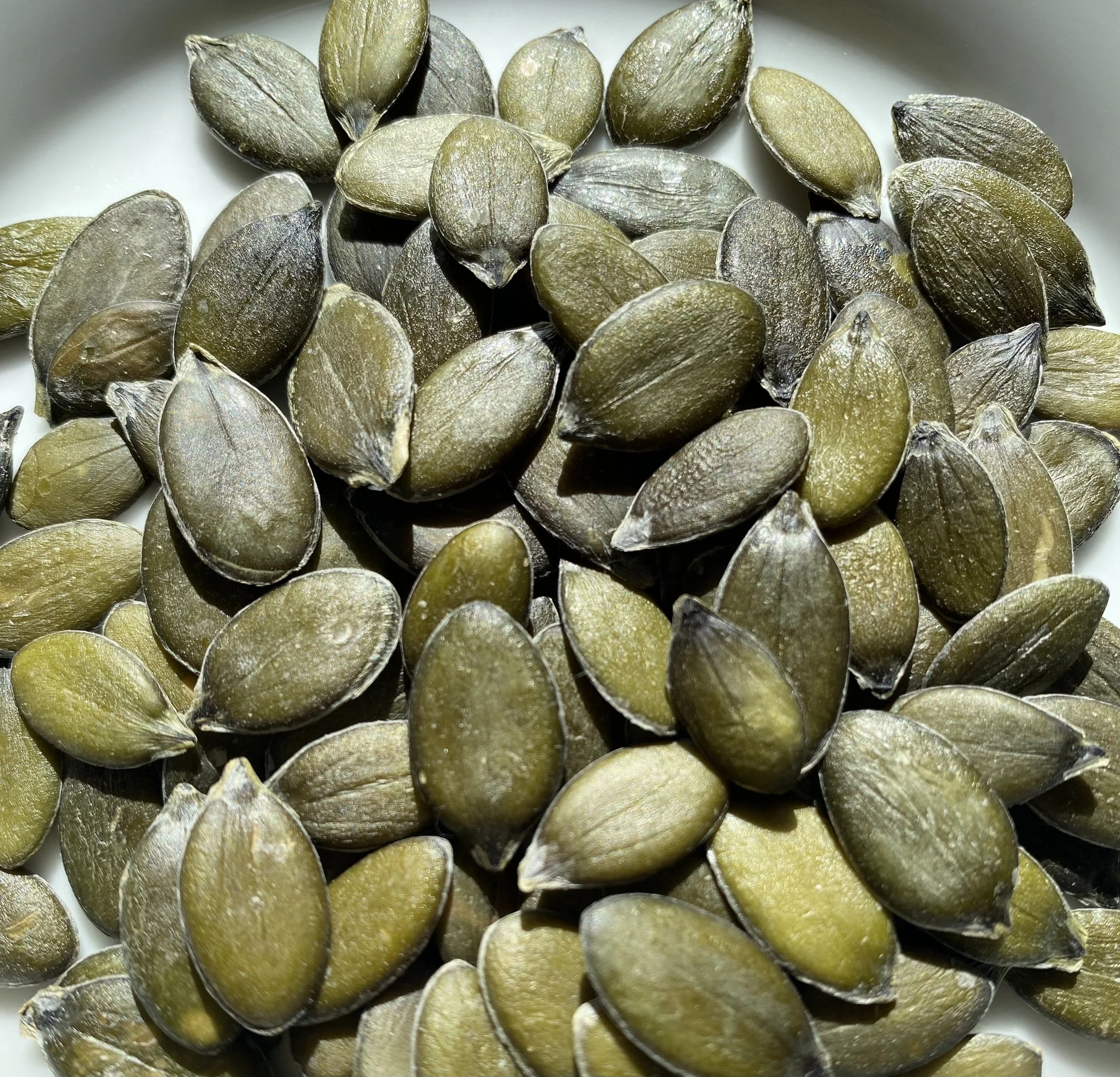Hulless Oilseed Pumpkin
Hulless Oilseed Pumpkin
HULLESS OILSEED PUMPKIN
Cucurbita pepo var. oleifera 'Kakai'
In the late 19th century a fortuitous mutation occurred in the picturesque region of Austria we know as Styria. One humble pumpkin plant in a field of dozens was found to have seeds with hulls so incompletely formed as to seem absent. For generations Austrian farmers had already been breeding and selecting C. pepo for seed oil rather than the dense edible flesh prized in the Americas, so a pumpkin full of seeds without their tough white outer hulls was not an insignificant discovery. In fact it must have seemed like a miracle.
The production of precious kürbiskernöl was ushered into high gear thanks to this peculiar mutation. Over the course of the next several decades the number of acres dedicated to the seeds of this single Styrian mutant increased, but it was not until 1947 that the first commercial selection became available from the Gleisdorf Seed Breeding Institute in Austria, the Gleisdorfer Ölkürbis. This commercial seed stock, like the original mutant, produced outrageously long vines and large fruit with big deep green seeds containing the extraordinary dichromatic oil only rarely found outside of Austria. This is the “true" Styrian oilseed pumpkin.
Concurrently, Austrian breeder and student of Mendelian genetics Erich Tschermak took it upon himself to hybridize the original hulless mutation with other C. pepo varieties. His selections were almost invariably smaller, with bushy plants that could be grown in tidy rows, and with seeds containing a lighter oil that could be more easily marketed outside of Austria. It is the progeny of these Tschermak selections that are most commonly found in the United States and Canada, which is fine because they are the only ones worth growing in gardens.
These seeds produce plants that are fairly compact, with vines that rarely exceed 3'. Expect one or two fruits per vine, or hand pollinate to assure that each vine produces two. The pumpkins are small, around 5lbs, and mottled green and gold. The flesh is inedible by human standards but they make fine jack-o-lanterns, especially if painted. More importantly these pumpkins are filled with delicious shimmering green seeds that can be eaten immediately or roasted and stored for months. Rich in fatty acids and protein, they are incredibly nutritious. They are easily pressed for oil in a home press, although we find this a bit of a waste unless you have a plan for the protein-rich mash. Better to seek out a bottle of pumpkin seed oil with the Geschützte Geografische Angabe label and save your seeds for snacking.
Sow these seeds directly into warm garden soil in full sun long after all danger of frost has passed. Water frequently until germinated and well-rooted. Mulch generously and fertilize regularly for at least the first several weeks. Wrap the stems to deter vine borers, which seem to love these plants. Foliar spray weekly with seaweed and/or milk and molasses. Relatively early to mature, with vines desiccated in around 90 days. Even in the Northeast that is usually plenty of time to harvest the seeds and carve up the pumpkins for Halloween. Compost the flesh or toss to the chickens.
Packet contains at least 20 seeds.
